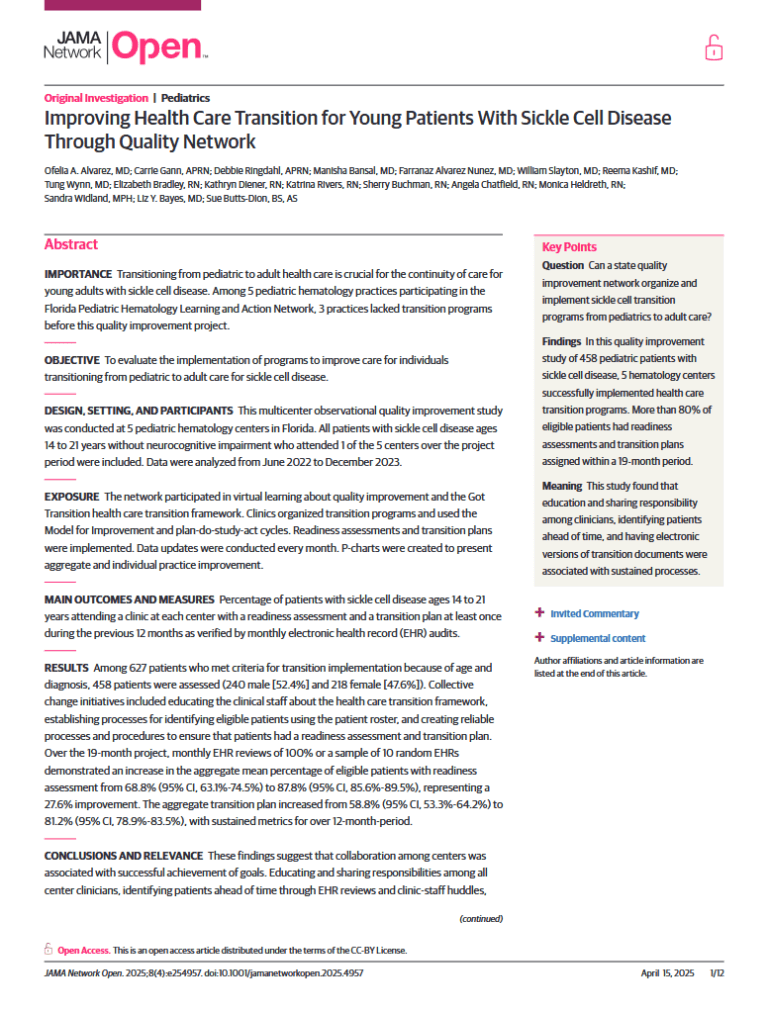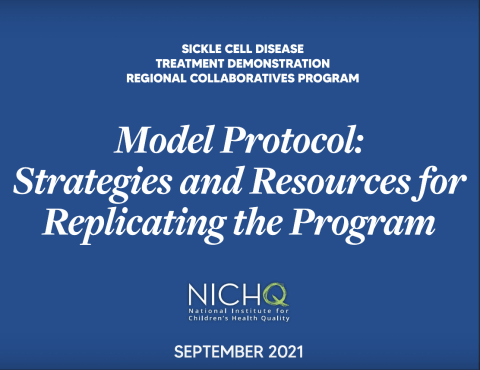Resources
Blog

Journey into Sickle Cell Disease Advocacy
Dr. Titilope Fasipe shares how her personal experience with SCD led her to become a pediatric hematologist, the importance of including warriors in care plans and practices, and what advocacy work she believes still needs to be done to advance SCD research and treatment.
Read this blog postCampaigns

National Sickle Cell Awareness Month
September is National Sickle Cell Awareness Month, and this year’s theme is “Sickle Cell Matters 2025.” Join the National Institute for Children’s Health Quality (NICHQ) in raising awareness about sickle cell trait and the unique challenges people living with Sickle Cell Disease (SCD) experience.
Learn more about this campaignBlog

NICHQ Employee Spotlight: Madeline D’Onfro
Madeline D’Onfro, MPH, a Senior Project Manager for NICHQ’s Community-Centered Hospital Initiative (CCHI), Hemoglobinopathies National Coordinating Center (HNCC), United HealthCare Catalyst Initiative: Infant Health Equity, and CDC Foundation Respectful Maternal Care Resources for Perinatal Quality Collaboratives, shares her professional goals and career journey thus far.
Read this blog postBlog

NICHQ Employee Spotlight: Kirsten Klatka
Kirsten Klatka, MSW, an associate project director for NICHQ’s Family Engagement and Leadership in Systems of Care (FELSC) and Hemoglobinopathies National Coordinating Center (HNCC), shares her professional goals and career journey thus far.
Read this blog postPublications

Improving Health Care Transition for Young Patients With Sickle Cell Disease Through Quality Network
In this quality improvement study of 458 pediatric patients with sickle cell disease, 5 hematology centers successfully implemented health care transition programs.
Access this publicationBlog

Enhanced Support During and After Transition from Pediatric to Adult Care Needed for People Living with Sickle Cell Disease
Strategies for providers to improve the experience of care for young people living with SCD and enhance the process of transition from pediatric to adult care include educating pediatric patients early about the process of transitioning to adult care, streamlining systems for sharing medical records, and considering bias when making pain management recommendations. Learn more about each strategy, and read insights from Mikeia Green, a fourth-year medical student at UC Davis, who has successfully transitioned from pediatric to adult SCD care.
Read this blog postBlog

3 Ways to Close Gaps in Sickle Cell Disease Care: Recommendations from NICHQ Projects
In the past several decades, clinicians, public health professionals, and those with lived experience have seen advancements in Sickle Cell Disease (SCD) treatments and research that have significantly improved outcomes and increased life expectancies for people living with SCD. For example, the FDA-approved medication hydroxyurea (HU) has been recommended as a SCD standard of care…
Read this blog postNews

Abt, NICHQ Partner With HRSA to Ensure Improvements to Sickle Cell Care Under $9.6M Contract
Rockville, Md. – Sickle Cell Disease (SCD) is an inherited blood condition affecting approximately 100,000 individuals in the United States. A disproportionate number of people living with sickle cell disease are Black and Hispanic individuals. Furthermore, SCD also affects a growing number of individuals of African, Caribbean, Central/South American, East Indian, Middle Eastern, Mediterranean and…
Read this news articleDownloadable Content

Sickle Cell Disease Treatment Demonstration Regional Collaboratives Program Compendium of Tools and Materials
Promising practices and strategies for improving sickle cell disease support.
Download this resourceDownloadable Content

Sickle Cell Disease Treatment Demonstration Regional Collaboratives Program Model Protocol
This Model Protocol provides strategies to improve care provided to individuals with SCD and trait.
Download this resource